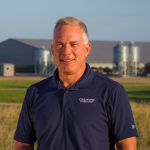It’s that time of year again. . . time for 2024 predictions. For the U.S. swine industry (and most of the world), 2023 has been a year most pig farmers would like to forget – not because disease issues were worse than normal, but because market prices have not been favorable. The short-term outlook is still challenging, but we hope farmers will be better rewarded in 2024. Being a veterinarian (and not an economist), I will reserve my 2024 predictions to issues surrounding pig health and the U.S. pig farmer.
Regarding pig health, I have three major predictions and offer my recommendations for farmers in preparing for the year ahead:
- Predictions:
1) No Change to Disease Trends
There will be no significant changes to trends in the major diseases affecting U.S. farms. I include on this list PRRSv, PEDv, Mycoplasma hyopneumonia, and swine influenza. Monitoring platforms, such as the Morrison Swine Health Monitoring Program, continue to show similar disease incidence and prevalence trends year after year. I have no reason to believe that we should expect different results in 2024.
2) Increased Threat of Foreign Animal Disease
African Swine Fever will remain the number one Foreign Animal Disease threat to the USA. ASF continues to spread worldwide. I believe it will exist in more countries (not less) next year than this year. It still poses a devasting risk to U.S. pork exports and our industry.
3) Gene Editing will be Approved
I predict that gene editing will be approved in pigs by the U.S. Food and Drug Administration (FDA). Currently, the FDA is reviewing the application made by Genus-PIC for approval of a gene-edited pig that is resistant to PRRSv infection. This technology offers a real solution to our most significant domestic disease. It also raises questions about how the consumer will respond to the use of such technology in food animals. In addition, the impact of gene editing has the potential to go way beyond disease resistance by impacting traits such as meat quality, pig physiology, and the ability to utilize nutrients in the feed.
- Recommendations:
1) Domestic diseases: Year after year, the infection rates of major diseases do not change. We need to stop doing the same things and expect different results.
– I encourage the implementation of “Next Generation Biosecurity” at sow farms. This means exceptional biosecurity to block mechanical transmission, air filtration, and feed mitigation. If that’s not possible, move your sows to an area of low/no pig density.
– Improve biosecurity on wean-to-finish production sites. We know what to do, but in many places, we just aren’t doing it!
– Push for industry-wide disease elimination. While we aren’t ready to eradicate PRRS nationally, we do have the tools and know-how to get rid of diseases like PEDv and Mycoplasma hyopneumonia. What’s stopping us?
2) While ASF remains our biggest FAD threat, there are several things that every pork producer should do – both for the good of their farm and the U.S. industry:
– Create a Secure Pork Supply plan for your farm. Work with your veterinarian. Get it done. It protects your farm and is the first step in FAD preparedness.
– Maintain 30 days of swine movement records. Keep this up to date. Immediate traceability will be key to any FAD response.
– Enroll in the U.S. Swine Health Improvement Program. This program will be codified soon by USDA and is likely our best-organized effort to deal with an FAD incursion.
– Support mandatory swine traceability. The U.S. swine industry needs to have the best traceability system in the world. It will be table stakes to maintain our export advantage.
3) Gene edit technology – this technology has the potential to revolutionize pig farming and food production:
– Get educated. Learn what it is and how it can impact your farm.
– Get engaged. We are on the front end of determining how this technology will be used in our industry. How will consumers view this technology and what will it do for pork demand?
– Get into the conversation and provide input because this technology will affect your farm and the future of pig farming.
Every new year presents an opportunity, and 2024 is no exception. I encourage you to take action, the health of our industry depends on it.
 Article by Joel Nerem, DVM
Article by Joel Nerem, DVM
Dr. Joel Nerem joined PIPESTONE in 2006 and now practices as Chief Veterinarian Officer. The West Union, Iowa, native is a graduate of Luther College in Decorah, Iowa, and earned his DVM from Iowa State University in 1995.
